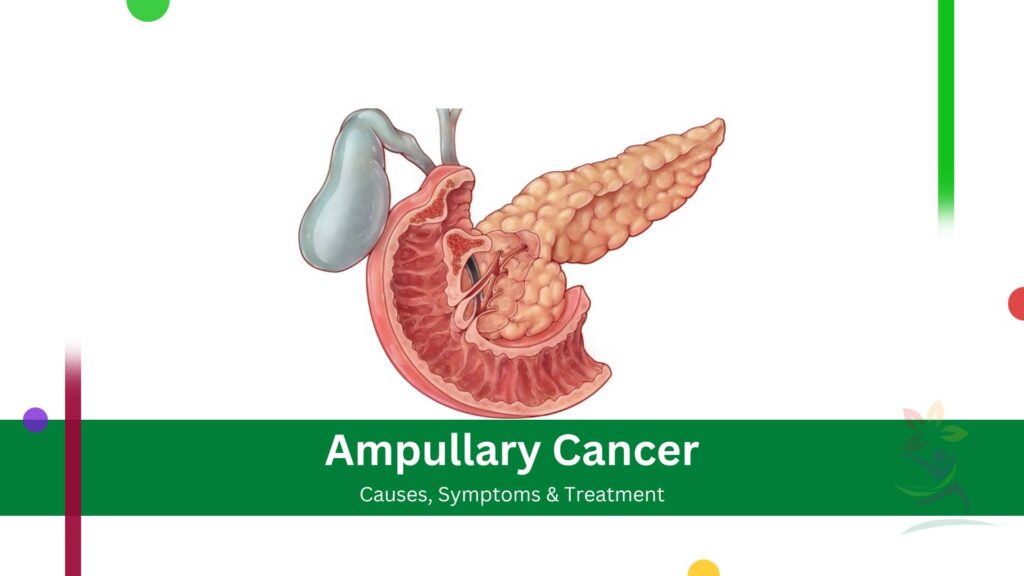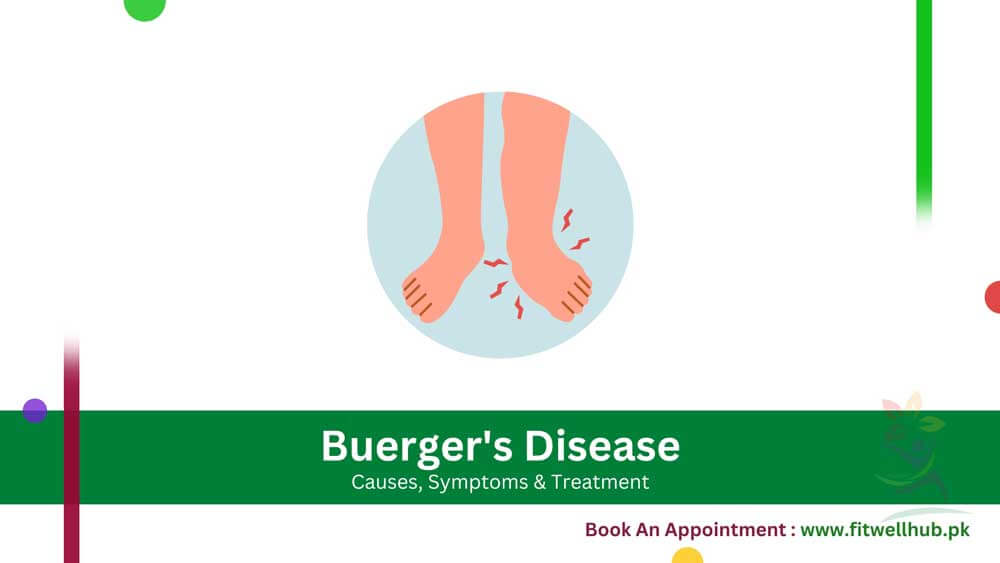Ampullary cancer is gastrointestinal cancer that occurs in the ampulla of Vater, a small opening near the small intestine where the bile duct and pancreatic duct meet and empty into the small intestine. Though the ampulla of Vater is a small area, it plays a vital role in digestion by allowing the flow of bile and pancreatic enzymes into the intestines. When a tumor develops in this area, it can cause a blockage. The symptoms of ampullary cancer may include jaundice, abdominal pain, and unexplained weight loss, often making early detection challenging.
Quick Links
ToggleFor effective management and treatment of ampullary cancer early detection is crucial. Usually, its symptoms mix with other conditions, making it difficult to diagnose early. Knowing the nature, causes, and symptoms of ampullary cancer can help in early diagnosis and treatment. It will also improve the prognosis for affected individuals.
Symptoms
Ampullary cancer appears with a variety of symptoms. Most of the symptoms are related to the obstruction of the bile duct. Early identification will help in prompt diagnosis and treatment improving the results. A few common symptoms are discussed below:
- Jaundice: The first and the most common sign is jaundice. It occurs when the tumor blocks the bile duct. It causes an accumulation of bile in the bloodstream resulting in the yellowing of skin and eyes.
- Abdominal Pain: Patients usually suffer from upper abdominal pain that may prevail to the back. It is caused by the pressure exerted by the tumor on surrounding organs.
- Nausea and Vomiting: Nausea and vomiting are common symptoms resulting from blockages of the digestive tract and often indicate an increase in the disease.
- Weight Loss: Due to digestive tract blockages, it becomes difficult for the body to absorb nutrients. Therefore rapid and unintentional weight loss is common.
- Pale Stools and Dark Urine: These symptoms are caused by abnormal bile flow. Pale stools indicate less bile in the intestines, while dark urine indicates more bilirubin in the bloodstream.
- Fatigue: The body’s response to cancer and its metabolic demands on the patient causes persistent fatigue.
- Loss of Appetite: Loss of appetite occurs due to digestive issues and general discomfort. Due to decreased food intake, it can cause weight loss.
When to See a Doctor
If you have persistent symptoms of jaundice, sudden weight loss, or abdominal pain, you should consult with a doctor. These signs are an indication of ampullary cancer or other severe problems. Early diagnosis increases the chances of successful treatment.
Fitwell Hub provides access to experienced doctors who can identify and suggest treatment for gastrointestinal disorders, such as ampullary cancer, through consultations. Visit to find out more details or to make an appointment.
Causes
The root causes of ampullary cancer are not yet well understood. Its common causes are:
- Gene Mutations: Gene mutations cause uncontrolled cell growth in Vater’s ampulla. This unchecked growth causes cancer. Mutations may occur spontaneously or may be inherited.
- Chronic Inflammation: Persistent bile ducts or pancreas inflammation can increase the chances of developing cancerous growths in the ampulla of Vater.
- Familial Adenomatous Polyposis (FAP): It is a hereditary condition. It causes various polyps in the digestive tract, out of which some polyps develop into cancer, including in the ampulla of Vater.
- Lynch Syndrome: It is also a heredity condition. Mutations in DNA repair genes increase the risk of numerous types of cancer, including ampullary cancer.
- Bile Duct Conditions: Choledochal cysts can cause chronic inflammation and bile stasis, which increases the risk of cancer development in the ampulla of Vater. In some cases, these cysts may also be associated with other conditions, such as adnexal tumors, further complicating diagnosis and treatment.
- Pancreatitis: Chronic inflammation of the pancreas can lead to the development of ampullary cancer. It causes repeated injury and repair cycles in the neighboring tissues.
- Environmental Factors: Certain environmental factors like chemicals, dietary factors, and lifestyle choices like smoking increase the risk of developing ampullary cancer.
Risk Factor
Several risk factors increase the risk of developing ampullary cancer. These risk factors are:
- Age: The risk of cellular mutations increases with age and ampullary cancer mostly affects individuals over 60. Older people are more vulnerable to the increasing effects of genetic and environmental factors that can cause cancer.
- Gender: Men are slightly more vulnerable to developing ampullary cancer as compared to women because of their lifestyle habits, hormone levels, or genetic factors that influence cancer risk.
- Family History: A family history of genetic syndromes like Lynch syndrome or Familial Adenomatous Polyposis (FAP) increases the risk of developing ampullary cancer. These inherited conditions make individuals more susceptible to multiple types of cancer, like the gastrointestinal tract.
- Chronic Pancreatitis: Long-term inflammation of the pancreas increases the risk of developing ampullary cancer. It causes repeated damage to the bile ducts and pancreatic.
- Smoking: Smoking increases the risk of ampullary cancer and many other cancers. Carcinogens expose the body to stimuli that cause mutations in cells.
- Diet: A high-fat, low-fiber diet increases the risk of developing ampullary cancer. Obesity and chronic inflammation, which are linked to cancer, are promoted by it.
Each factor plays a different role in the development of ampullary cancer. Lifestyle modifications and regular medical checkups can effectively manage these risk factors.
Complications
If not treated properly ampullary cancer can cause various complications. These complications badly affect the patient’s life. Some of the common complications are:
- Blockage of the Bile Duct: The development of ampullary cancer blocks the bile duct. It results in infections, jaundice, and serious liver damage. In addition to impairing bile flow, this blockage results in problems with digestion and metabolism.
- Inflammation of the Pancreas: Tumor formation causes pancreatic inflammation. This inflammation causes severe abdominal pain, digestive difficulties, and disturbs the normal functioning of the pancreas, and causes complications like pancreatitis.
- Metastasis: Ampullary cancer is malignant. It spreads to other body parts, including the liver and lymph nodes. Once it spreads, it becomes more challenging to treat it. And it worsens the patient’s prognosis.
- Malnutrition: The growth of the tumor decreases the body’s efficiency of nutrient absorption. After surgical removal of the digestive tract parts, patients suffer from nutrient deficiencies and severe weight loss.
- Post-Surgical Complications: Whipple procedure is a surgical procedure used for ampullary cancer. After surgery, it may cause some complications such as infection, delayed gastric emptying, and digestive issues, which affect recovery and disturb the quality of life.
Diagnosis
Healthcare providers diagnose ampullary cancer using a combination of endoscopic procedures and imaging tests. Generally recommend the following tests:
| Diagnostic Test | Purpose |
|---|---|
| CT Scan | Produces detailed abdominal cross-sectional images to detect tumors, aiding in staging and treatment planning. |
| MRI | Provides clear images of bile ducts and pancreas, assessing tumor size, location, and spread to nearby structures. |
| Endoscopic Retrograde Cholangiopancreatography (ERCP) | Visualizes pancreatic and bile ducts, supports biopsies, and confirms malignant cells. |
| Endoscopic Ultrasound (EUS) | Combines endoscopy and ultrasound to assess tumor extent, offers fine-needle aspiration biopsies, and provides detailed imaging. |
| Biopsy | Examines tissue samples under a microscope to confirm cancer type and stage, guiding therapy options. |
Fitwell Hub has a modern lab that conducts these diagnostic tests. For more information or to schedule testing.
Treatment
Whipple procedure (pancreaticoduodenectomy) is used for the treatment of ampullary cancer. Other treatment options are:
1- Surgery (Whipple procedure)
The main treatment for ampullary cancer is surgery. Surgeons use it to remove the tumor, along with parts of the pancreas, bile duct, and small intestine, focusing on complete cancer elimination.
2- Chemotherapy
In chemotherapy, healthcare providers use drugs to kill or stop the growth of cancer cells. Healthcare specialists use it to control cancer that has spread or to reduce tumors before surgery. It is also used to eliminate any cancer cells that may have persisted after surgery.
3- Radiation Therapy
High-energy radiation in this therapy targets and kills cancer cells. They apply it together with surgery or as a treatment for localized tumors. It decreases both the tumor’s size and symptoms.
4- Targeted Therapy
Targeted Therapy is used for specific genetic mutations or molecular targets that are associated with cancer cells. It disturbs their growth and spreads with fewer side effects as compared to traditional chemotherapy. It provides a more targeted therapeutic strategy and is customized for the tumor’s genetic profile.
5- Immunotherapy
It is used to boost the body’s immune system to recognize and attack cancer cells. It provides newer treatment options for some patients with ampullary cancer.
Each treatment option has its own benefits and risk factors. The stage of the cancer and the patient’s overall health determine the choice of treatment.
Medications
Commonly used medications are:
- Pain Relievers: To manage postoperative discomfort or pain associated with the tumor opioids and non-opioid analgesics are used as pain relievers. It enhances the patient’s ability to perform daily activities and overall comfort.
- Antiemetics: To alleviate and prevent nausea and vomiting antiemetics are used. It is also used to prevent side effects of radiation therapy, and chemotherapy. It improves the patient’s tolerance to treatment and improves overall quality of life.
- Pancreatic Enzymes: To compensate for the loss of pancreatic function after surgery, pancreatic enzymes are used. They help in the digestion of carbohydrates, proteins, and fats, and prevent digestive issues and malnutrition.
- Antibiotics: To prevent or treat infections that arise due to bile duct obstruction or after surgical procedures antibiotics are used. It ensures the patient’s recovery is not complicated by bacterial infections.
Our Fitwell Hub pharmacy provides these medications, ensuring that patients have access to the treatments they need.
Frequently Ask Questions (FAQ’s)
Ampullary cancer is gastrointestinal cancer that occurs in the ampulla of Vater. Ampulla of Vater is a small opening area near the small intestine where the bile duct and pancreatic duct meet and empty into the small intestine.
Jaundice abdominal pain, nausea and vomiting, weight loss, dark urine and pale stools, fatigue, and loss of appetite are the common symptoms of ampullary cancer.
For the diagnosis of ampullary cancer, a combination of endoscopic procedures and imaging tests such as CT scans, MRIs, endoscopic ultrasound (EUS), ERCP, and biopsy are used.
The survival rate for ampullary cancer varies from person to person depending on the stage at diagnosis. Early detection leads to better outcomes. Generally, the 5-year survival rate ranges from 30% to 60% for those diagnosed early, but for advanced stages, it decreases significantly.
Genetic mutations, inherited conditions like Familial Adenomatous Polyposis (FAP), Lynch syndrome, and chronic inflammation are the main causes of ampullary cancer. Environmental factors and smoking may also cause ampullary cancer.











